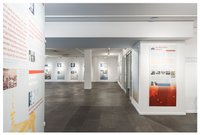Lovis Corinth, geb. am 21. Juli 1858 in Tapiau, Ostpreußen (heute Gwardeisk, Oblast Kaliningrad), gest. am 17. Juli 1925 in Zandvoort, Provinz Nordholland, war ein deutscher Maler und Grafiker. Nach dem Studium an den Akademien in Königsberg und München zog er ab 1901 dauerhaft nach Berlin, pflegte Freundschaften mit Max Liebermann und Gerhart Hauptmann, stellte bei dem Kunsthändler Paul Cassirer aus. Er wurde Mitglied der „Berliner Secession“, 1911 zum Vorsitzenden gewählt und blieb dieser als einziger namhafter Künstler nach Austritt von Max Liebermann und 42 weiteren Kollegen verbunden. Lovis Corinth zählt zu den wichtigsten Vertretern des deutschen Impressionismus.
Dargestellt ist ein Mann im Halbprofil. Bei dem porträtierten Mann handelt es sich um Hermann Struck. Hermann Struck war besonders bekannt für seine Radierungen und Lithografien.
Radierung, 1920.
en

